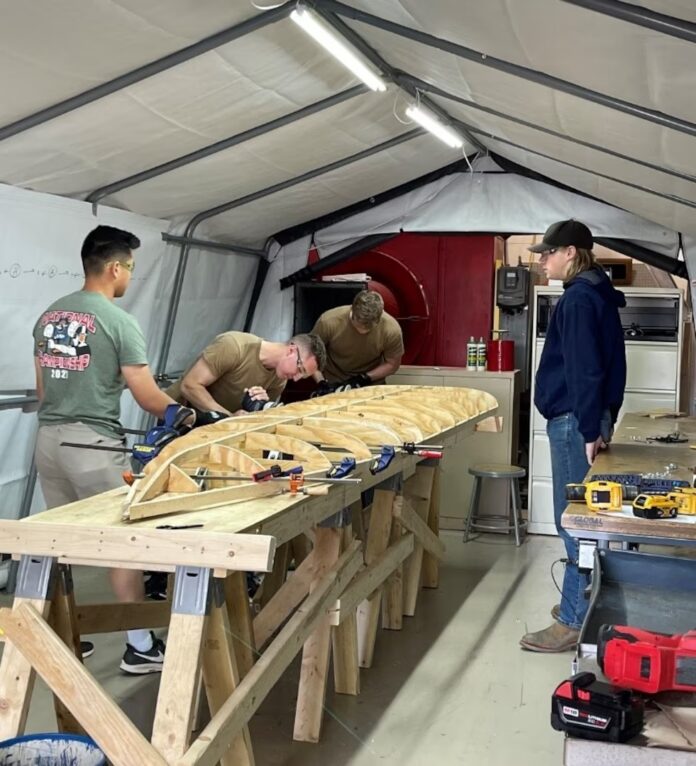Carol Johnson, Southern Indiana Business Report
A collegiate challenge that has brought together six Indiana universities to team up with Naval Surface Warfare Center, Crane Division will culminate this spring when NSWC Crane hosts the Artificial Intelligence Maritime Maneuver Indiana Collegiate Challenge April 26-28 at Pokagon State Park.
Since last fall, teams of students have been working to develop a low-cost, easy-to-build, low profile vessel (LPV) that can be made fully autonomous for a variety of missions, including supply delivery, stealth missions and locator purposes.
The partnership is supported by the Office of Naval Research and was made possible through $5 million in federal funding secured by Rep. Jim Banks, R-Indiana, in 2021.
The six participating schools are Trine University, Rose-Hulman Institute of Technology, Indiana University, Purdue University in West Lafayette, Purdue Fort Wayne and the University of Notre Dame.
The teams have been challenged to make the LPVs fully autonomous without breaking the bank – $12,000 is the max amount the LPV can cost. Each team received a prototype boat last year. The teams also received sensor packages and propulsion systems to help make the vessels autonomous. Each team received a $40,000 stipend for the program, though they were limited to spending $5,000 on additional materials for their boats.
Each team will get to demonstrate their LPV’s performance and ability to maneuver through obstacles and tasks during the two-day competition.
NSWC Crane’s Maj. Amy Ross is program lead for the project and said she is looking forward to the April competition.
“We are excited to see what each team develops and brings to the competition. The great thing about this challenge is that the LPV (low-profile-vessel) offers a low-cost and innovative solution that can potentially help benefit the warfighter,” Ross said.
In addition to seeing what the students have come up with for the LPVs, Ross said the project is paying dividends for all the partners and is showing students the many opportunities in working with the Department of Defense.
“One benefit is that these students get the chance to work hand-in-hand with the government and see how their work directly impacts the warfighter,” Ross said. “For example, we had Midshipmen from the United States Naval Academy work on this project last summer. The students got to work with them one-on-one and (that) brings a more personal approach to the entire effort.”
An unintended benefit of the program is the creation of a new talent pipeline from the engineering schools to Crane.
“At NSWC Crane we are constantly growing and looking for new talent. This challenge provides a unique opportunity to look within the state of Indiana and expose students to the Department of Defense,” Ross added.
Trine University, which is located in Angola and a few miles from where the competition will be held is also seeing benefits from the project.
As reported by Inside Indiana Business, the project has facilitated an expansion of Trine University’s relationship with NSWC Crane. The university’s engineering students have landed at Crane for internships and careers in the past, but Jason Blume, assistant vice president of Innovation One at Trine, told IIB that AIMM is giving Trine students a chance to work with the southern Indiana Naval base on projects and strengthen the relationship between Trine and Crane.



